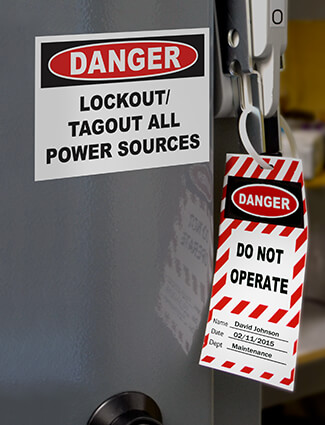Worker Injuries Have Long-Lasting Effects

Huge aluminum extrusions were fed into a cutting machine. Despite a warning sign, a man reached inside to sweep aside small pieces of metal while the blades were spinning.
"I was working in our metallurgical lab when I heard a series of horrific screams coming from outside the lab," said Randy Cureton, a former aerospace worker who recalled the incident. He was 21 at the time.
Memorable Incidents
The rotating blades caught the man's glove, pulling him into the machine, and began cutting away at his arm, bit by bit. Two men ran toward the machine and pulled the man out by his legs. His entire arm up to his shoulder was gone.
It's memorable incidents like these that prompt agencies and labor groups to focus on preventing amputations and other serious injuries. This year, the Occupational Safety and Health Administration is increasing its inspection focus on reducing hazards that can lead to amputation injuries for workers in the manufacturing industry. April 28 is Workers Memorial Day, to remember those who have suffered injuries and died on the job. It's also a reminder for workplaces to look for solutions to hazards that could cause injury, illness, and death. For example, OSHA offers guidance on lockout/tagout requirements to control hazardous energy.
"When not properly safeguarded, moving machine parts can cause severe workplace injuries, like amputations," said OSHA Administrator Michael Rivera in Pennsylvania. "OSHA's National Emphasis Program on Amputations in Manufacturing Industries aims to raise employer and worker awareness about the safeguards essential for preventing these unnecessary and devastating injuries."
When workers are injured on the job, the effects are long-lasting. Cureton said he will remember the horrible bloody scene for the rest of his life. It reminds him of the importance of safety.
"I'd never seen a man hurt like that before," he said. "I've never forgotten that guy. But it left me with the sense that safety is always first and foremost. Anywhere you go. And if you see something that's not right, do something about it. It only takes an instant and someone's life can be changed forever. Safety is part of your job, too."
Injury Prevention

Workplaces can encourage safety on the job as part of teamwork protocol. A good safety program can also improve overall workplace efficiency. Here are a few tips to remind workers and improve safety around moving parts or equipment.
- Wear Proper Protection: Gloves, jewelry, long sleeves, and loose clothing are just some items that can be hazardous in the workplace when working around moving parts or equipment. Safety glasses or a face shield can protect against flying debris. While gloves are useful for many cases, they can make hazards more serious if used in the wrong situation..
- Mindful maintenance: Complex machinery may have multiple moving shafts and components. Pay close attention to machine faults and report them promptly. Use lockout/tagout to perform de-energized machine maintenance. If the machine is energized, use an air blast or vacuum to clean debris.
- Prevent contact: Create a safety barrier between workers and machines using secured machine guards. Reinforce safe walking, working, and machine movement areas with floor marking.
- Awareness: Train workers consistently and follow up on maintenance procedures. Keep instructions simple and near equipment. Use supportive pictorial references and words in various languages. Be sure safety signs and labels reflect current information and grab attention. Mark emergency stop buttons and instruction reminders for maintenance or emergencies.
Workplace safety is everyone's business and priority. Workplaces can step up simple communication to show their commitment to keeping jobs safe for their workers. Create a safe culture so that workers can return home at the end of each workday, safe and unharmed. Workers can self-check activities and speak up to improve the safety of various tasks and processes.
Learn how the visual workplace approach can make a world of difference. Download our free Visual Workplace ? Visual Management guide.
Related Resources

Cutting Corners on Machine Safety a Common Problem
Machine guarding violations are consistently among the OSHA top 10 violations. There are several common ...
Read
5 Easy Solutions for Machine Safety Guards
What Are OSHA Machine Guarding Requirements? OSHA machine guarding requirements state that hazardous machine ...
Read
Workplace Injuries: The Common, the Costly
Some of the most common injuries cost employers more than $59 billion a year. We cover the top types of ...
Read.png)





